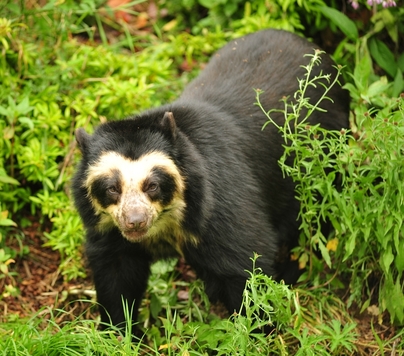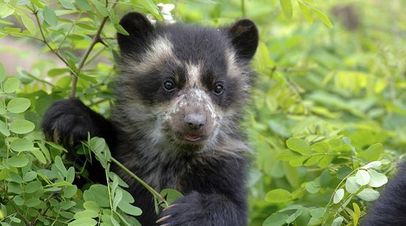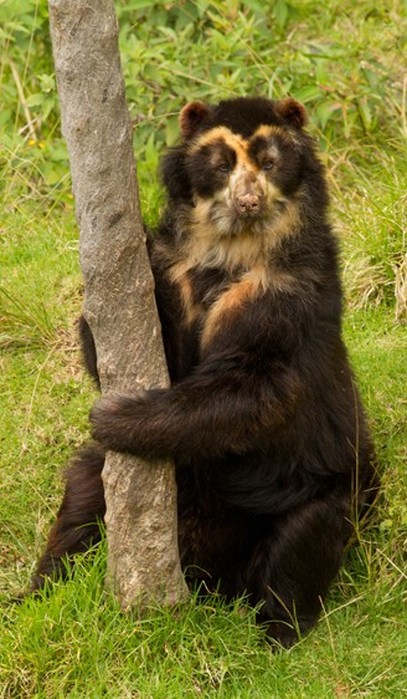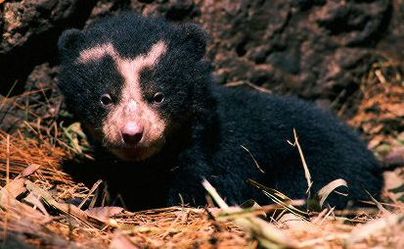|
THE SPECTACLED BEAR
The Spectacled Bear is the only species of bear in South America and one of the most emblematic mammals of the tropical Andes. Spectacled Bears are robust, with a short, muscular neck and short but strong legs. As with all bears, Spectacled Bears walk on the soles of their feet and have longer front than rear legs, making them excellent climbers. Their fur is usually black, although it can have dark red-brown tones on the upper-parts. Spectacled Bears sometimes have white to pale yellow markings around the muzzle, on the neck and the chest. These markings may also be present around the eyes, which is the reason for its common name. Spectacled bears have an omnivorous diet, although they are fairly specialised in the consumption of fruit and parts of several plants. They feed high up in trees as well as on plants growing on the ground. When ripe fruit is not available, bears live off fibrous parts of plants such as bromeliad hearts, soft parts of palms, orchid bulbs and even tree bark. In addition, they eat insects, small rodents and birds. The spectacled bear is found from Venezuela to Northern Argentina, including Colombia, Ecuador, Peru and Bolivia. According to some researchers, the greatest number of bears is to be found on the borders between Colombia, Ecuador and Peru. Recent estimated population sizes for most areas are small, with a total estimate for the Northern Andes comprising anywhere between 6,000 and 10,000 individuals. The main threats to Spectacled Bears throughout the region are hunting, habitat loss and degradation. Loss and fragmentation of the species habitat is due to the construction of roads, the destruction of forests for illicit crops, and the use of grazing areas for cattle farming. Protected areas conserving bear habitats and some of their populations are not large enough for the species' survival throughout it's range. Current land use patterns include the felling of trees, land clearing, and extraction of timber and firewood for farms in the higher mountainous areas. Hunting is one of the major causes of the population reduction of this species. Local inhabitants kill bears for diverse reasons, including subsistence hunting, protection against attacks to livestock and crops (especially maize) and fear of the animal due to cultural reasons. It is calculated that around 200 bears are hunted down each year in the region. Spectacled Bears are also hunted for parts used in the wildlife trade. The gall bladders are valued in traditional oriental medicine and can fetch a high price on the international market. Recent estimates put the price at US$150 for one, which is 5 times the average monthly wage in Ecuador. There is also a large market for bear paws, with one paw bringing in between US$10 and US$20. Many of these threats can be largely attributed to the inequity in land tenure. In the most productive areas of the Northern Andes, property is concentrated in the hands of a few, which means that the poorest inhabitants are forced to occupy the limited land available on the fragile hillsides of mountains inhabited by the Spectacled Bear. (http://wwf.panda.org/about_our_earth/species/profiles/mammals/spectacled_bear/) |





